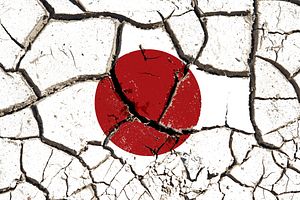One of Japan’s most visible opposition parties, the Japan Restoration Party (Nippon Ishin no Kai), is making further announcements about its upcoming split, and the nature of how the two factions, led by Toru Hashimoto and Shintaro Ishihara, will look. It appears that Osaka mayor Hashimoto, who leads the western faction of Japan Restoration, will emerge stronger than the former mayor of Tokyo, if not as powerful as his current party.
The Japan Times reported Wednesday that Hashimoto’s faction will be coordinating its political stance with Your Party (Yui no To), with the intention of making a formal alliance once Japan Restoration is dissolved. While there are still a few undecided party members, the split appears to leave both factions weaker than when they started.
Last week, more than 30 Japan Restoration members indicated their support for Hashimoto, while 21 members said Wednesday they would follow Ishihara after the breakup. With 62 total representatives in the Diet, that still leaves a few undecided members. The party has asked all its lawmakers to decide between the two leaders by Thursday night. Even if he were to get all 40 members who haven’t declared for Ishihara, combined with Your Party’s 12 members, Hashimoto will still have less support in the Diet after Japan Restoration’s breakup.
While the math may make the decision to break up the Japan Restoration Party seem ill-advised, the political landscape within the Diet’s opposition may help explain the move. Currently the opposition to the ruling LDP coalition is scattered, with Prime Minister Shinzo Abe’s party and its New Komeito partner holding a majority in both houses. Ishihara is bringing his faction of Japan Restoration more in line with the LDP’s stance on foreign policy and the normalization of the military. In order to be part of a viable opposition, Hashimoto is seeking to align part of the political spectrum away from the LDP’s views.
While both Hashimoto and Ishihara have both made inflammatory nationalist gestures before (Hashimoto called comfort women “necessary” and Ishihara instigated the government purchase of the Senkaku/Diaoyu Islands), Hashimoto is against reactivating Japan’s nuclear sector. This is a position diametrically opposed to the LDP’s, and perhaps one that he hopes will find purchase amongst the fractured opposition.
Hashimoto’s real difficulty will be in finding other parties to align with. While the possibility of a grand coalition in opposition to the LDP is remote, being able to align later on with larger opposition parties like the DPJ on certain issues in which public sentiment is still strong (like Japan’s nuclear program), is within reason. At the moment, that appears to be the only avenue available to Japan’s many small opposition parties. As Abe begins to enact a host of economic, energy, and military reforms this summer, the ability of the opposition to coordinate will be closely watched.

































